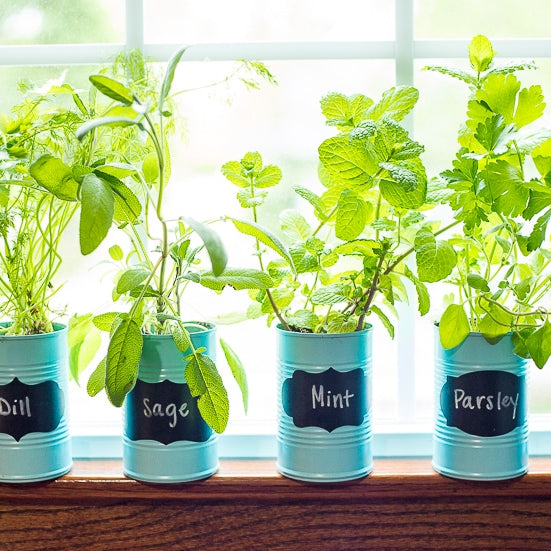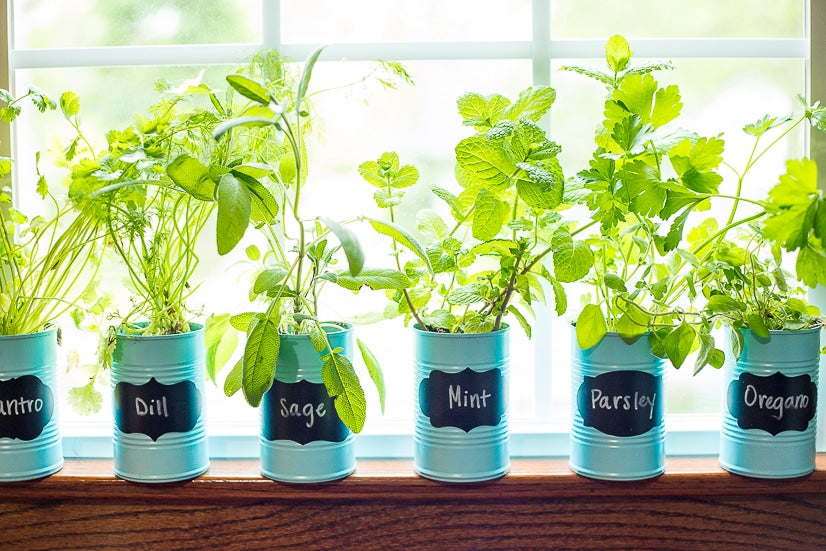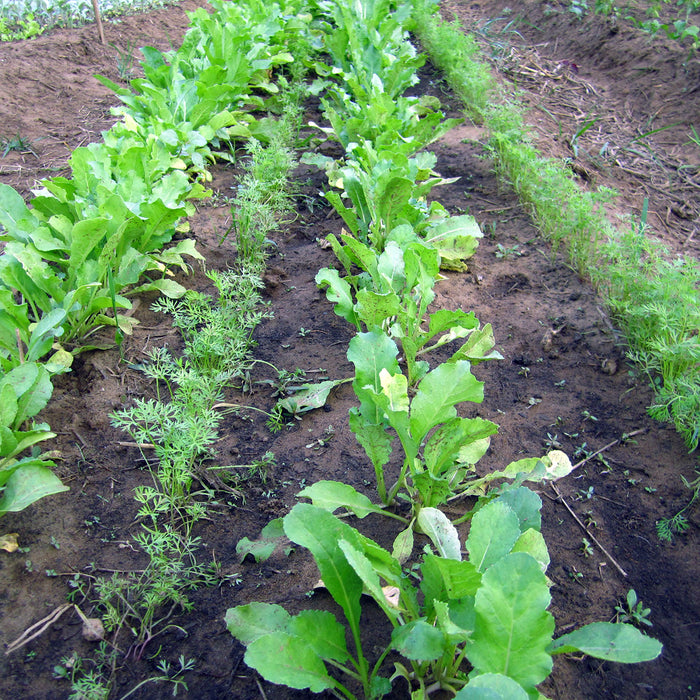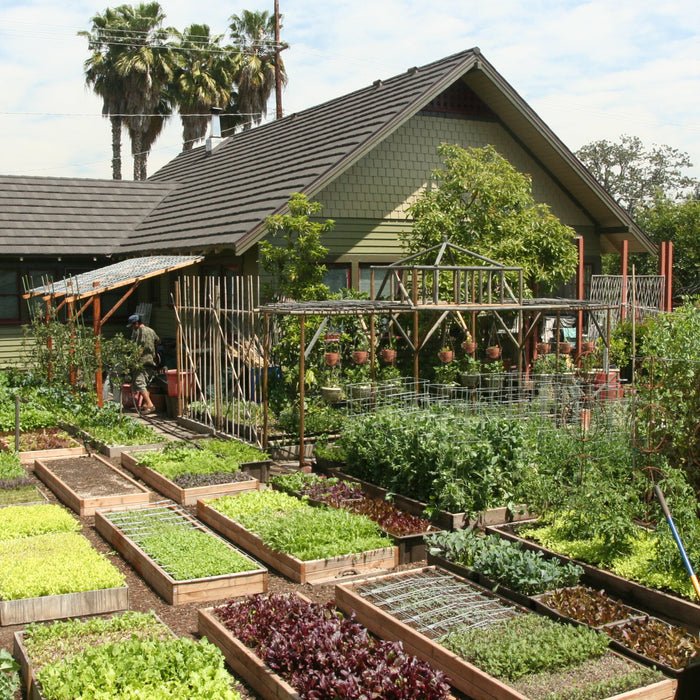

The Ultimate Guide to Creating a Herb Garden in Your Windowsill
The Ultimate Guide to Creating a Herb Garden in Your Windowsill
Are you tired of spending money on expensive herbs that go bad before you can even use them? Why not create your own herb garden right in your windowsill?
Not only is it easy, but it's also a great way to add fresh flavors and aromas to your cooking all year round. Read this post to learn how to cultivate your own herbs for fresh, healthy meals!
Step 1: Choose Your Herbs
The first step to creating a windowsill herb garden is choosing which herbs you want to grow. There are many different types of herbs that can be grown indoors, including basil, chives, parsley, thyme, and mint. Choose the herbs that you love to cook with and that will thrive in the light and temperature conditions of your windowsill. You can buy heirloom seeds in our survival seed vault if you're interested.
Basil
Basil is a popular herb used in Italian cuisine, and it requires a lot of sunlight to grow well. Place it in a spot with at least six hours of direct sunlight daily. Water basil when the soil is dry to the touch, and don't overwater as it can lead to root rot. To promote bushy growth, pinch off the top two sets of leaves when the plant is 6 inches tall.
Rosemary
Rosemary is a woody herb with needle-like leaves and a piney fragrance. It thrives in a sunny location with well-drained soil. It doesn't like being overwatered, so let the soil dry out between watering sessions. Prune rosemary regularly to keep it bushy and prevent it from getting too woody.
Thyme
Thyme is a versatile herb that can be used in many dishes, from soups and stews to roasted meats and vegetables. It prefers well-drained soil and moderate watering, so don't let the soil dry out completely. Trim thyme regularly to promote bushy growth.
Parsley
Parsley is a biennial herb with flat or curly leaves. It requires at least 6 hours of direct sunlight daily and moist soil. Water parsley regularly, and pinch off the flowers as soon as they appear to keep the plant from going to seed. Trim parsley regularly to encourage new growth.
Mint
Mint is a herb with a refreshing scent and taste, and it is often used in teas and cocktails. It needs partial shade and plenty of moisture to grow well. Water mint frequently, but don't let the soil become waterlogged. Prune mint regularly to keep it bushy and prevent it from becoming too woody.
Oregano
Oregano is a herb with a strong flavor and aroma, and it's used in Mediterranean cuisine. It prefers well-drained soil and full sunlight. Water oregano regularly, but don't overwater as it can lead to root rot. Trim oregano regularly to keep it bushy and prevent it from becoming too woody.
Sage
Sage is a herb with soft, fuzzy leaves and a pungent flavor. It requires well-drained soil and plenty of sunlight to thrive. Water sage regularly, but don't overwater it. Trim sage regularly to promote bushy growth.
Chives
Chives are a herb with slender, hollow leaves and a mild onion-like flavor. They prefer well-drained soil and moderate watering. Water chives when the soil is dry to the touch, and prune them regularly to promote bushy growth.
Cilantro
Cilantro is a herb with flat, delicate leaves and a distinctive flavor used in Latin American and Asian cuisine. It needs well-drained soil and moderate watering. Water cilantro when the soil is dry to the touch, and pinch off the flowers as soon as they appear to keep the plant from going to seed.
Lemon Balm
Lemon balm is a herb with a lemony fragrance and flavor, and it's often used in teas and desserts. It prefers partial shade and well-drained soil. Water lemon balm regularly, but don't overwater it. Prune it regularly to keep it bushy.
Step 2: Choose Your Container
Once you have chosen your herbs, it's time to choose a container. Any container that is at least 6 inches deep and has drainage holes will work. You can use a traditional flower pot, a plastic container, or even a mason jar. Just make sure that the container you choose will fit on your windowsill and provide enough space for your herbs to grow.
Step 3: Add Soil and Plant Your Herbs
Add potting soil to your container and plant your herbs according to the instructions on the seed packet. Make sure that the soil is moist but not too wet. You can use a spray bottle to water your herbs so that you don't overwater them.
Step 4: Provide Adequate Light
Herbs need a lot of light to grow, so make sure that your windowsill receives at least 6 hours of direct sunlight each day. If your windowsill doesn't get enough light, you can supplement with artificial light using a grow light.
Step 5: Water and Fertilize
Your Herbs Keep your herbs well-watered, but make sure not to overwater them. Check the soil regularly to make sure that it stays moist. Fertilize your herbs every few weeks with a water-soluble fertilizer to keep them healthy and strong.
Step 6: Harvest Your Herbs
Once your herbs start to grow, you can start harvesting them. Use scissors to cut off the top leaves of each stem, leaving a few leaves at the bottom to allow the plant to continue growing. Harvest your herbs regularly to encourage growth and to enjoy the delicious flavors and aromas in your cooking.
Common Problems:
-
Overwatering: Overwatering is one of the most common problems when it comes to growing herbs. Herbs do not like to be constantly wet and can easily develop root rot or other fungal diseases if they are overwatered. To prevent overwatering, make sure to use well-draining soil and only water your herbs when the top inch of soil is dry.
-
Underwatering: Just like overwatering, underwatering can also cause problems for your herbs. When herbs are not watered enough, their leaves will wilt and turn brown. To avoid this problem, make sure to water your herbs when the top inch of soil is dry.
-
Pests: Herbs are also susceptible to pests such as aphids, mites, and whiteflies. To prevent pest problems, make sure to inspect your herbs regularly and remove any pests you find. You can also use organic pest control methods such as neem oil or insecticidal soap.
-
Fungal Diseases: Fungal diseases such as powdery mildew and downy mildew can also affect herbs. These diseases are caused by excess moisture and can be prevented by making sure your herbs are not overwatered and have good air circulation.
-
Nutrient Deficiencies: Herbs may also suffer from nutrient deficiencies if they are not provided with the right amount of nutrients. Make sure to fertilize your herbs regularly with a balanced fertilizer to provide them with the nutrients they need to thrive.
-
Temperature and Light: Herbs need the right amount of temperature and light to grow properly. If they are not provided with the right conditions, they can become stunted or leggy. Make sure to place your herbs in a location that gets at least 6 hours of sunlight per day and maintain a temperature between 60-75°F.
Creating a windowsill herb garden is a fun and easy way to bring fresh herbs into your home. With a little bit of effort and some basic supplies, you can enjoy the delicious flavors and aromas of fresh herbs all year round. So, get started today and enjoy the taste of fresh herbs in your next meal!
Read Next:
Intercropping: A Guide to Improving Crop Yields, Soil Health, and Resilience
Recommended Posts
- Best Places to Move to be Self-Sufficient and Off the Grid
- Homesteading for Beginners: How to Start Living Off the Grid and Making Money
- The Ultimate Guide to Urban Farming: Everything You Need to Know
- The Ultimate Guide to Homesteading and Raising Chickens: Tips, Tricks, and Tools
- Meet the Family Growing 6,000 Pounds of Food on Just 1/10 Acre: A Lesson in Sustainable Farming



